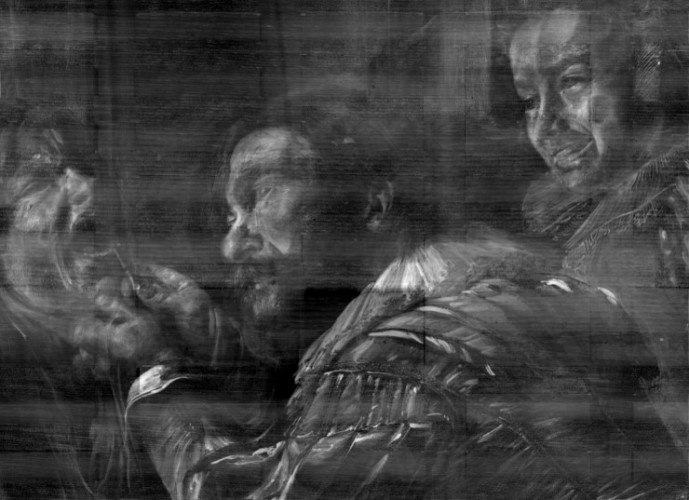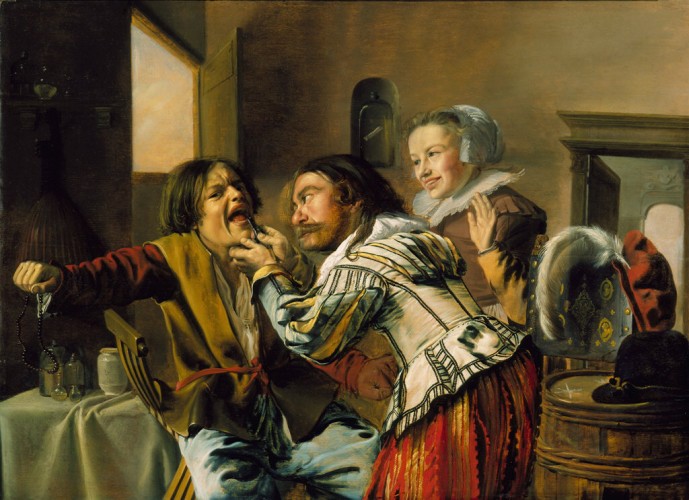The NCMA has collaborated with Duke University and the Free University of Brussels to develop an innovative art conservation tool. The software program, called Platypus, uses mathematical algorithms to allow art conservators to better analyze paintings using X-ray images. Platypus removes lattice patterns that are created on X-ray images by wooden slats attached to the back of many wooden panels. The museum has released photographs of Jan Miense Molenaer’s (1610-1668) The Dentist to show the results of its research.
Information from the museum, 10 September 2015
Art conservators, art historians, and curators often use X-ray radiography to discover information about the manufacturing process and condition of a painting. However, cradling—wooden slats attached to the back of many old paintings executed on wooden panels—creates lattice patterns that appear as grids or stripes on an X-ray image. These patterns can obscure the image and distract conservators from reading the image and analyzing paint layers.
“Cradle patterns in X-ray images have been an ages-old problem for conservators studying collections of Old Master paintings, and until Platypus, required many hours of tedious manipulation of the X-ray image in Photoshop or various other techniques, some of which could be damaging to the painting,” says William Brown, chief conservator at the NCMA. “We have been fortunate to work with world leaders in the fields of time-frequency analysis, informatics, and image processing to come up with a practical solution to a difficult problem.”
The cradle pattern problem appeared while Rujie Yin, research assistant in Duke’s Mathematics Department, was using X-ray images to research a 14th-century altarpiece by Francescuccio Ghissi for an upcoming exhibition at the NCMA. Yin was frustrated at the distracting cradling and decided to use mathematical algorithms to solve the problem.



